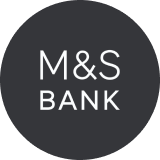Find an unsecured personal loan
Review of unsecured personal loans and what to consider.
Managing personal finances can sometimes be a challenge. This is especially true when unexpected expenses pop up out of nowhere and you don’t have the cash at hand to cover them. In such situations, many people turn to personal loans as a method of sourcing funding quickly.
There are two types of loans: secured and unsecured. In this article, we’ll explain the difference, as well as discussing the ins and outs of unsecured personal loans, their benefits, and what to consider before applying for one.
What are unsecured personal loans?
You may have heard of an unsecured loan, but what does this term mean in the world of personal finance?
An unsecured personal loan is a type of loan which doesn’t require collateral. Essentially, this means that borrowers aren’t asked to put up any valuable assets, such as their car or home, as security for the loan itself.
Instead, lenders approve unsecured personal loan applications based on your creditworthiness and perceived ability to repay the loan.
When used in the right circumstances, personal loans can be flexible financial tools. The unsecured loan amount which you can take out will range from a few hundred to tens of thousands of pounds.
Again, due to their flexible nature, the repayment terms can also vary widely. You may be able to negotiate the suitable repayment term for you, as lenders are willing to provide a few months to several years for their customers to pay them back, depending on the amount you’re looking to borrow.
What’s the difference between unsecured and secured loans?
As we highlighted earlier, the main difference between unsecured and secured loans is that a secured loan is backed by collateral, while unsecured loans are not.
This means that if you have no access to any valuable assets which can be used for collateral, an unsecured loan may well be a more appropriate option for you.
Moreover, in the case of a secured loan, if you are unable to keep up with repayments the lender can seize the collateral to recover the amount which you owe them.
This can be a stressful prospect, and many borrowers prefer to borrow loans which are unsecured, as the threat of losing a valuable asset such as a house is not a personal risk that they’re willing to take.
However, because a lender has the added security of the collateral when they offer a secured loan, lower interest rates and higher borrowing limits are more readily available with a secured loan, as opposed to one which is unsecured.
Examples of secured loans include mortgages and car loans, while examples of unsecured loans include personal loans and credit cards.
Before taking out an unsecured personal loan, you should consider your own needs and financial situation before choosing to rule out secured loan options.
What’s the process of applying for an unsecured personal loan?
Now we’ve covered what an unsecured personal loan is, it’s time to explore the process of actually applying for one. The steps involved can vary between different lenders. The specific loan product you’re after also plays a part in dictating the process you will follow.
However, there are some general steps which you can expect to take when applying for your unsecured personal loan.
- Before making any application for an unsecured personal loan, it’s important to check your credit score to see where you stand, and whether you can expect your application to be accepted. Your credit score will impact the interest rate you’re offered, as well as your eligibility for a loan. Fortunately, you can check your credit score for free with credit reporting agencies like Equifax, Experian, and TransUnion.
- Once you have a good idea of your credit score, you can now start to shop around for loans. Bear in mind factors such as interest rates, repayment terms, and any additional fees or charges associated with taking out the loan. You are able to compare loans from different lenders online, or in person. It depends how much guidance you think you might need.
- When you’re finally ready to apply for a loan, it’s now time to gather documentation to support your application. Proof of income, bank statements, and proof of identity all play a part in the lenders’ decision. This documentation will help the lender assess your creditworthiness and ability to repay the loan, so it’s vital to get organised and help the process go as smoothly as possible.
- Once you have your documentation to hand, you are now ready to complete your loan application. Again, this can be done online or in person, depending on the lender and your individual preferences. The application form will likely ask for a bit of information about your income, your expenses, and any existing debts you have under your belt.
- After you’ve submitted your loan application, the lender you have chosen will review your information and determine whether to approve or deny your request to loan some cash. The time which this process takes varies. It could be anywhere from a few minutes to a few days before you hear back, depending on which lender you use.
- If all goes smoothly and your loan is approved, your lender will ask you to sign a loan agreement to ratify the exchange. Once this has been signed and sealed, the lender will usually transfer the funds you’ve borrowed directly to your bank account. This process can take a few business days, but it shouldn’t be too long before you can access your money.
Generally, the process of applying for an unsecured personal loan is relatively straightforward. As long as you ensure that you understand the terms and conditions of the loan before accepting it, and provide the correct documentation, accessing the funds you need with an unsecured personal loan can be quite simple.
How much will I pay to borrow an unsecured personal loan?
As well as paying back the amount you borrow with an unsecured personal loan, you will also have to pay some interest on the sum, as well as additional fees in some cases.
The cost of borrowing an unsecured personal loan can therefore vary depending on a few factors such as the loan amount, the repayment term, and your credit score.
One way to get an idea of the cost of different loan offers is to look at the Annual Percentage Rate (APR). The law requires lenders to publish the APR for each of their loans, so every option you consider should have its APR stated.
This useful figure encompasses a few different costs which add up to the whole price of borrowing money from a lender.
Not only does the APR show the interest rate on the loan you’re considering, but it also considers any additional fees and charges that the lender will expect you to cover, such as origination fees or closing costs related to the loan. You can use this figure to compare loan offers from different lenders you discover.
As for the interest rate on unsecured personal loans, this can range from around 3% to 30% or more of the sum borrowed. The figure depends on the lender you select, and your creditworthiness.
Generally, borrowers with tip top credit scores will be offered low interest rates. However, if your credit score is on the lower side, you might be faced with higher rates of interest when taking out an unsecured personal loan.
When considering the overall cost of an unsecured personal loan, it’s important to remember that the longer the repayment term is, the more interest you will end up paying over time.
Aiming to find a loan which balances the lowest possible APR with a manageable repayment term can help you keep on top of your monthly payments whilst keeping the cost of your borrowing at a level which suits your budget.
It can be beneficial to shop around and compare offers from multiple lenders before making your final decision.
Advantages and Disadvantages
| Advantages of unsecured personal loans | Disadvantages of unsecured personal loans |
| No collateral required, so no risk of losing assets | Higher interest rates compared to secured loans |
| Flexible use of funds for a variety of purposes | Loan amounts may be limited compared to secured loans |
| Approval based on creditworthiness and ability to repay, not on assets | Lenders may have stricter eligibility requirements, making it harder to qualify |
| Repayment terms can be flexible and tailored to individual needs | Late payments or defaults can damage your credit score and make it harder to get loans in the future |
| Can help consolidate debt and improve credit utilisation | Some lenders may charge origination fees or penalties for prepayment |
| Quick access to funds without lengthy application process | Borrowers may be tempted to take on more debt than they can realistically afford to pay back |
Am I eligible for an unsecured personal loan?
As a general rule, whilst you don’t have to be a homeowner to apply, unsecured personal loan lenders will only consider applications from borrowers who have at least fair credit score. Additionally, most lenders will require that:
- You are in paid employment
- Be over the age of 18
- Not currently be in full time education
Find the best unsecured personal loan deals
Taking out an unsecured personal loan is a big investment, which is why you should ensure that you have the capacity to afford the repayments. Whilst our personal loan calculator can assist you in filtering out a selection of secured loans that fit your criteria, we still urge that you contact a mortgage broker to assist you.
We have a specialist unsecured personal loan advisory team, who can help you calculate the personal loan terms that you can comfortable afford. Additionally, our expert team can also compare a range of leading and exclusive personal loan deals, to help find the ideal loan perfect for your personal circumstances.
If you have any questions or queries about finding a personal loan, why not call us today on 0117 313 8872, for a free initial consultation.



